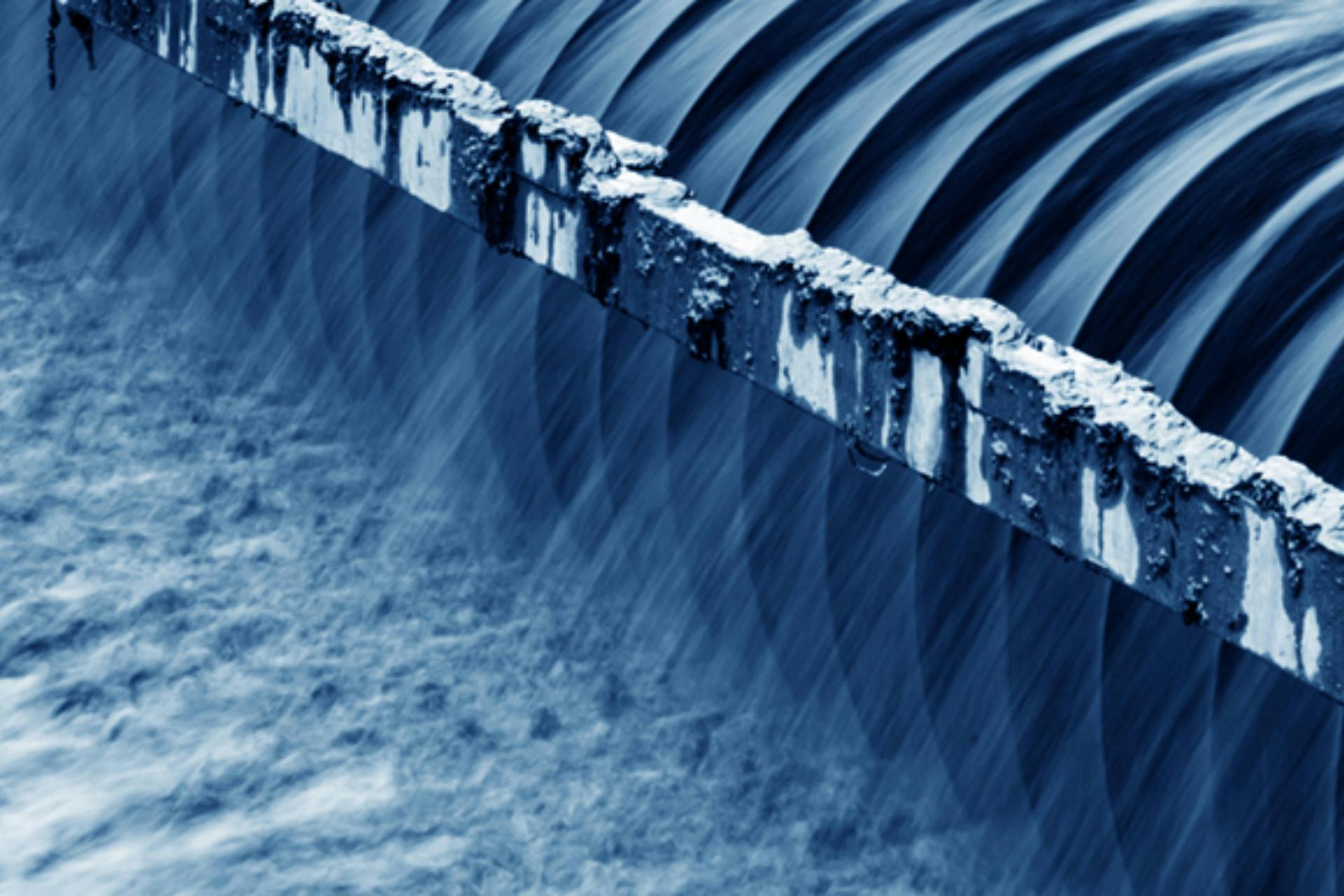

Andrew VigarAXA XL's Country Leader for Japan
June 2, 2021
Water Shortages: an Underappreciated Risk
The continued availability of adequate supplies of clean freshwater is an underappreciated risk for many companies. Andrew Vigar, AXA XL's Country Leader for Japan, has the details.
6 minutes
Original Content : AXA XL
According to the latest estimates, by 2030, global water demand will outstrip supplies by 40 percent. To help understand why, here are the amounts of water needed to produce some common items along with projected growth rates for each:
- It takes about 15,400 litres of water to produce one kilo of beef. By 2027, production is estimated to increase by 21 percent in developing and 9 percent in developed countries.
- It takes 1,500 litres to grow the cotton needed to make one T-shirt. World cotton production is projected to grow 1.5 percent annually over the next ten years.
- It takes 38 litres to fabricate a single computer chip. The global semiconductor market—which is dominated by companies based in East Asia—is projected to record 4.7 percent compound annual growth between now and 2027.
Thus, in a world growing in population and prosperity, how governments, companies and individuals exploit—and conserve—our finite supplies of freshwater will become one of humanity's most critical imperatives.
Prioritising water risk
In the World Economic Forum's Global Risk Report (GRR), water crises
has consistently appeared in the top right
quadrant of risks that respondents rated as having both high likelihood and impact. This is not surprising given the extensive reporting in recent years outlining the myriad ways vital freshwater resources are under stress.
Nonetheless, in my experience, water risk is not consistently near or at the top of the risk management agenda in many companies. Some of the clients I work with are very much focused on water—more on that later. However, others aren't addressing water quality/scarcity challenges with a focus and deliberation consistent with the GRR ratings.
My anecdotal observations are consistent with research conducted by AXA XL as part of its Valuing Water Initiative. This new programme aims to create a more water-secure world by addressing the needs of clients and broader communities; you can read more about it here. In a series of interviews and roundtable discussions, clients and water providers discussed their efforts to manage current and emerging water-related risks and build resilience. One of the takeaways from these conversations is that while some companies are highly engaged in addressing water-related risks, others are only starting to consider how future water scarcity could affect their operations. In my experience, the former includes companies where freshwater is integral to the production process, e.g., food and beverage, and the latter often applies to businesses where water is ancillary.
Before proceeding further, a note to readers who may take issue with my assertion that water-related issues often are an underappreciated risk: I readily acknowledge that as insurance/risk management professionals, we contend with a daunting array of risks, threats, hazards and perils, and organisations and individuals have only so much bandwidth; we have to set priorities. That said, I would suggest that proactively managing water risk is preferable to reactively responding to a water crisis.
What does that look like? In my experience, highly water resilient companies engage in three broad activities:
- Monitoring water needs and current uses.
- Identifying opportunities for implementing the
3 Rs
; reducing water use, replacing water from alternative sources, and reclaiming wastewater. - Considering how well a country/municipality manages its freshwater resources when making site location decisions.
A prerequisite: consistent, reliable data
The American statistician W. Edwards Deming once said, In God we trust, all others must bring data
. This adage also reflects why water risk may not be a higher priority in some organisations; they lack consistent, reliable data on water withdrawals, consumption and discharge.
However, many municipal and privately owned water utilities have started to recognise the importance of helping commercial users better understand their consumption patterns and are working with them on collaborative efforts to meet their future needs.
For instance, Singapore's national water agency, the Public Utilities Board (PUB), looked at how usage will evolve in the next forty years. Its conclusion: commercial users will account for 70 percent of overall demand in 2060 compared to 55 percent today. In response, PUB adopted a three-pronged strategy to help local businesses better understand and address their water issues. First, PUB is facilitating water audits to help companies identify water-saving opportunities. Next, it created several funds firms can tap to defray some of the costs involved in implementing promising new water technologies. Finally, PUB recognised how celebrating successes helps bolster awareness of and support for the overall initiative. It regularly showcases the innovative applications different companies are pursuing to achieve one or more of the 3 Rs.
There also are more new solutions designed to help companies better monitor and manage water consumption. For instance, AXA XL has worked with a company which has created a water monitoring system incorporating connected sensors and smart shut-off valves. Combined with artificial intelligence, advanced analytics and cloud-based computing, the solution helps companies quantify their water usage while also identifying and reducing costly water leaks and inefficiencies.
An increasingly important consideration in site location decisions
In today's global economy, we are all familiar with how the brand name companies at the top of the food chain rely on dense webs of primary, secondary and tertiary suppliers for various materials and components. For these suppliers, decisions about where to site their operations often involve a complex calculus involving factors like access to raw materials/end consumers, local land/labour costs, transport links, and so on.
Case in point: the semiconductor industry. Semiconductor manufacturers historically prioritised three criteria in their site location decisions: proximity to major customers, low-cost energy, and abundant freshwater supplies. Given these considerations, it is not surprising that the world's twelve largest wafer fabs
where chips are manufactured are in Asia.
That third criterion—abundant freshwater—matters because the average wafer fab uses up to 15 million litres of water per day. Chip fabrication requires ultrapure water to rid the chips of contaminants, and it can take around two litres of tap water to produce one litre of ultrapure water.
However, due to increased competition and, in some countries, more prolonged dry seasons, these resources are becoming progressively constrained. But, as they say, necessity is the mother of invention
, and semiconductor manufacturers around the region are pursuing a variety of innovative approaches aimed at reducing/replacing/reclaiming freshwater. One involves, for example, reducing the standard 2-1 ratio by using dry chemical reactions instead of water-based approaches to rid the chips of contaminants. Another is recycling wastewater from the manufacturing process. However, that can be tricky since the waste stream often contains heavy metals and organic compounds that aren't easily removed. Finally, many of these firms are collaborating with water management agencies like Singapore's PUB in joint efforts to better manage and conserve the available resources.
These and other initiatives make sense because simply building a new wafer fab somewhere else is expensive and time-consuming. However, companies in other industry sectors may have more flexibility. For instance, in recent years, the textile industry has grown in places like Vietnam and Bangladesh, driven in part by those countries' relatively abundant freshwater resources. While noting that these are complex decisions, I would suggest that when companies evaluate different locales, they should also consider how well a country/municipality manages its freshwater and their efforts to help firms become more water resilient.
A best-in-class example
Finally, I want to briefly highlight how one company exemplifies the points I've mentioned. (For reasons of client confidentiality, I can't cite it by name.) This diversified conglomerate conducts business globally in a wide range of industries. A few years ago, it embedded sustainability
as a core objective in its goals, strategies and business operations.
That includes, for instance, setting a quantitative target for reducing the amount of water used in all of its businesses. Specifically, the company aims to reduce water consumption per employee by at least one percent annually. Given the diversity of this firm's operations, this type of approach makes sense as it clearly shows the progress the enterprise is making in reducing water usage.
In its extractives business, the company is implementing various new technologies to optimise water consumption in ore processing while also improving how it collects and recycles wastewater. And in the category of challenges and opportunities
, the firm has invested in water businesses in Asia, Latin America, Europe and the Middle East. These include water supply companies, wastewater treatment operations and desalination plants using reverse osmosis membrane technology.
In closing, I applaud those companies that are proactively managing water risk. And for those where it is not currently near or at the top of the risk management agenda, I hope the points I've shared offer some valuable ideas for addressing this complex yet vital issue.
About the author
Andrew Vigar is AXA XL's Country Leader for Japan. He has thirty-plus years of insurance industry experience, primarily establishing and managing operations in emerging markets including Central and Eastern Europe, Latin America and Asia. Andrew has lived and worked in Poland, Hungary, Austria, Switzerland, Hong Kong, Singapore and Japan. He has a bachelor's degree in English Literature and Language from Liverpool University and a post-graduate degree in Environmental Policy from the Open University. He has also won awards for Haiku poetry and published a book on Japanese Ukiyo-e woodblock prints. Andrew is based in Singapore can be contacted at andrew.vigar@axaxl.com.



